How you can help our local birds
By Jen Prusse, District Wildlife Biologist, White River National Forest.*Photos by Rick Spitzer...
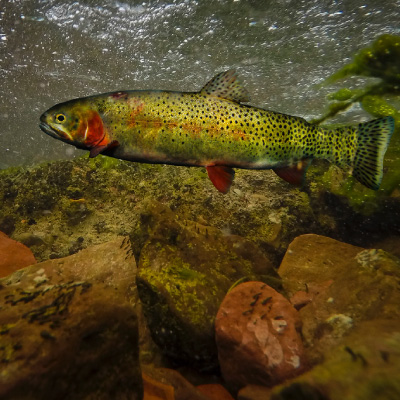
Fish ecology and streamflow data are changing in today’s climate. Whether it’s high runoff, drought, or higher water temperatures occurring earlier in spring due to low snowpack and heat waves, it is important to understand how those conditions affect water quality and aquatic life.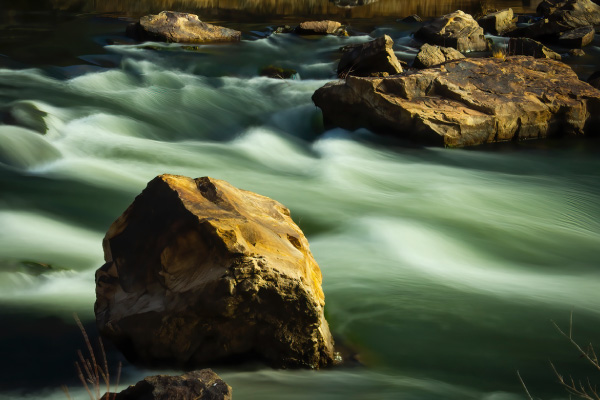
Many of the fish game species that live in the Colorado cannot tolerate higher temperatures.
The Eagle River Watershed Council (ERWC) is an organization that monitors, advocates, and educates the public on the health, restoration and conservation for the Upper Colorado and Eagle River basins (erwc.com). ERWC generates a weekly River Report for anyone who is interested, from anglers to water recreationalists and landscapers who can subscribe to receive daily emails on water conditions and trends throughout the watershed system in Eagle County. This information can aid in reducing the harmful effects of the human impact on fish and aquatic life when streamflow is low.
Recent rains and the monsoonal flows have helped reduce the drought conditions in Eagle County, but in some areas of the river temperatures remain high. As of June 23, Eagle County was experiencing “extremely severe” (erwc.com) drought conditions from Black Gore Creek and the upper Station of Gore Creek in the eastern portion of the county to the Eagle River at Wolcott and to the Eagle River below Gypsum in the west, that was related to low cubic feet per second (cfs) flow numbers. But that has changed over the last week due to the rain we have been experiencing.
Lower runoff and higher water temperatures have an impact on the quality of fishing for people who raft and fish the Colorado River.
When anglers, rafters, and other types of recreational users do not curtail water activities during low cfs flows, it can subject fish to disease and fish mortality. The Eagle River Watershed Council’s report on August 1, still had water temperatures in the “high”, or red zone (70F or higher) for the Colorado River near Dotsero and the Colorado River above Glenwood Springs. The only stream conditions reported on August 1 that were “low”, or at the green (under 65F) temperature level was the mouth of Gore Creek near Minturn.
When water temperatures are high, the Eagle County Watershed Council recommends for users to start early and finish early, land fish quickly, keep them wet, and fish at higher elevations where the water is cooler. These current stream conditions can change rapidly throughout the summer and will change even more, over time, as the climate changes.
Late June brought wildfires and mudslides to Sylvan Lake State Park and the Grizzly Creek burn area respectively, as we saw scattered showers with lightening, which was expected to have ignited the fire near Sylvan Lake, then a monsoonal flow of rain that caused the mudslides in Glenwood Canyon from the Grizzly Creek fire landscape. These two examples are evidence that supports Colorado’s ever-changing climate and water quality conditions.
Now that July has brought more rain and mudslides, the runoff has increased the amounts of sediment flowing into the creeks and rivers which can also be a stressor on aquatic life. Sedimentation from stormwater runoff, especially from land near creeks, streams, and rivers that has been treated with pesticides and fertilizers, pollutes the water and changes the pH balance making it harder for fish to survive. It must be noted here that runoff from impervious surfaces contains oil and grease and other pollutants that also have an adverse impact on water quality and further stress aquatic life.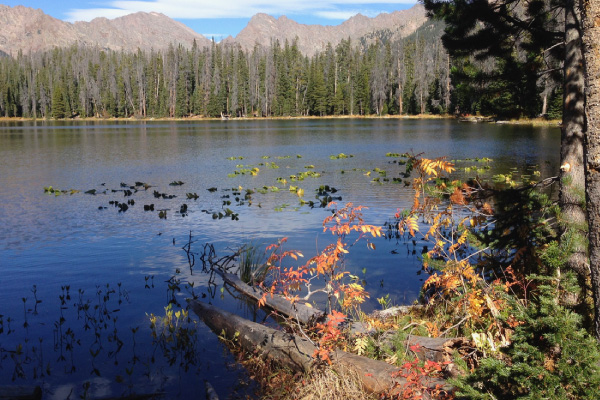
Fishing in higher lakes where water is cooler has less impact on fish disease and fish mortality. Photo by Kathryn Middleton.
When sediment builds up on the riverbed it decreases the ability for fish to spawn and disrupts the natural habitat critical for maintaining a healthy aquatic food chain that ebbs and flows with the natural current. For river recreationalists, an increase in sediment deposits alter river flows and water depth, creating difficulties for river navigation as well (Mid-America Regional Council (cfpub.epe.gov), so beware of the constant changes in conditions before venturing in.
Another great source for fishing locally and statewide is Colorado Parks and Wildlife (CPW). They advise anglers on the overall conditions and/or closures of lakes and waterways on their website, cpw.state.co. When conditions don’t meet certain criteria, such as, daily water temperatures at 70F or higher, or if stream flows are below 50% of the average daily flow, and if a natural or man-caused environmental event has occurred (cpw.state.co.us), CPW will notify the public of the closures through public news media, fly shops, and outfitters.
CPW reported that as of July 30, the Eagle River water flow had dropped allowing for better fishing conditions for the time being. It is also necessary to purchase a fishing license. The easiest way to purchase a license is online at cpwshop.com, there you can purchase fishing or hunting licenses, and/or parks passes.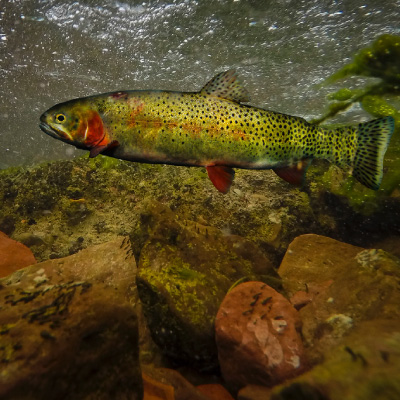
When the water temperature hits 60 degrees, the cutthroat trout will begin to stress and feed less. When temperatures reach 68.5 to 69 degrees Fahrenheit, cutthroat begin to die.
We are thankful that we have seen rain and cooler temperatures over the summer thus far, but we have to be mindful to do our best to reduce our impact and try not to disturb the natural process as the fish and aquatic life strive to survive and adapt to the changing climate. Check with local fly shops, or the Eagle County Watershed Council, and CPW’s websites for the most accurate information, and remember that water conditions change every day and we want to keep our waterways healthy to keep aquatic life thriving in today’s climate.
Kathryn Middleton has lived in Vail since 1982, she is a member of the Eagle County Community Wildlife Roundtable and participates in the Education/Outreach Committee. She also serves on the board for the Mountain Valley Horse Rescue in McCoy, Colorado.
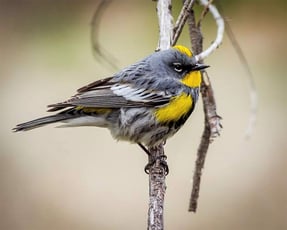
By Jen Prusse, District Wildlife Biologist, White River National Forest.*Photos by Rick Spitzer...

Calling all backcountry enthusiasts! This winter has delivered less snow so far, along with...